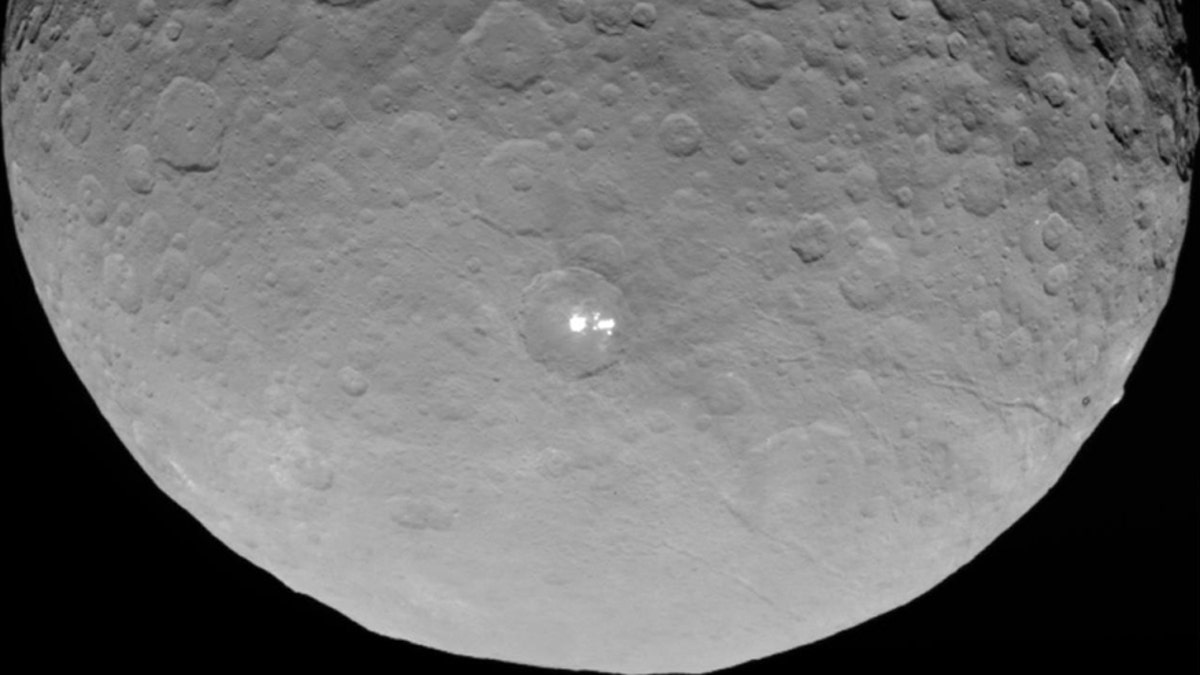
(NASA/JPL-Caltech/UCLA/MPS/DLR/IDA)
A series of new NASA images may explain the unusual bright spots on dwarf planet Ceres that have been puzzling scientists.
The closest-yet images of Ceres were taken by NASA’s Dawn spacecraft on May 3 and 4 from a distance of 8,400 miles. The images show that the brightest spots in a crater within Ceres’ northern hemisphere are actually composed of many smaller spots. While the exact nature of the spots is unknown, scientists believe that they may be caused by ice.
"Dawn scientists can now conclude that the intense brightness of these spots is due to the reflection of sunlight by highly reflective material on the surface, possibly ice," said Christopher Russell, principal investigator for the Dawn mission from the University of California, Los Angeles, in a statement.
An animation produced by NASA shows a sequence of new Ceres images taken during Dawn’s first mapping orbit. Dawn will enter its second mapping orbit June 9, circling Ceres every three days at a distance of 2,700 miles. During the second mapping orbit, which is also known the survey orbit, the spacecraft will comprehensively map Ceres' surface, according to NASA. It will also assess whether Ceres is geologically active.
NASA’s Dawn spacecraft successfully entered Ceres' orbit March 6, making history as the first mission to achieve orbit around a dwarf planet. Scientists hope that NASA’s investigation of Ceres will boost our understanding of how the solar system formed.
It’s not just Dawn that is taking impressive space photos. Last month the Mastcam on NASA’s Curiosity Mars rover captured a stunning image of the sun setting on the red planet.
